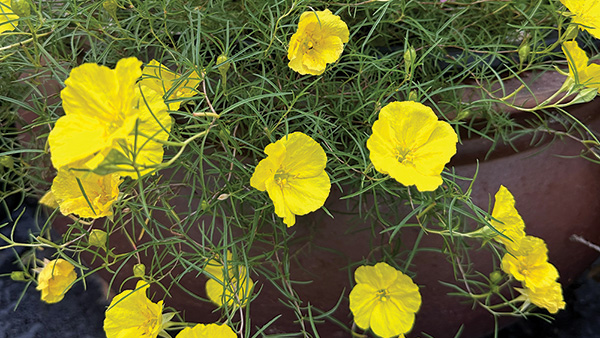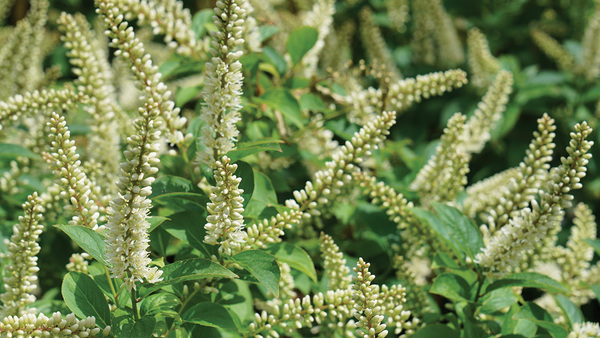
As a true plant geek, I’ll admit that I’m a sucker for blue flowers. An impressive, truly blue flower is a rarity in nature. Perhaps that’s why I’ve been drawn to them over the years. When I lived in southeastern Alaska, Himalayan blue poppies (Meconopsis spp., Zones 5–8) were my blue flowers of choice. Unfortunately, their climatic requirements dictate living in a temperate rainforest or in the high meadows of the Himalaya for successful cultivation. These conditions are very difficult to replicate in most areas of North America. What’s the solution for a good, true-blue flower that is tough as nails? I recommend ‘Electric Blue’ foothill penstemon.
The genus name of this beauty is derived from two Greek words: penta, meaning “five,” and stamon, which means “stamen.” Each flower, therefore, has five stamens; four are fertile and one is sterile. Another common name, beardtongue, refers to the sterile stamen’s tuft of hairs. Penstemon is the largest flowering genus native to North America, and its members occupy a wide range of habitats, with most growing in western states.
Foothill penstemon is native to the blazingly hot Sierra Nevada foothills of California, where it grows among the open oak forests and grassland areas. ‘Electric Blue’ was selected for its uniform, true-blue flowers. It is a clump-forming perennial with evergreen foliage. The bloom period is late spring to summer, and if the plant is cut back after blossoming, it may grace your garden with another flush of flowers in late summer.
This species prefers and will do best in full sun with fast-draining, infertile (sandy or gravelly) soil. Avoid growing it in wet, poorly drained soil, as that will encourage root rot and greatly shorten its life. Also, avoid excessive fertilization; water-soluble, chemical fertilizers will push lush growth at the expense of plant longevity. Foothill penstemon is quite drought tolerant once established, but it will thrive with infrequent, deep summer watering. A bonus is that it is deer and rabbit resistant. Like all penstemons, it attracts hummingbirds and all manner of bees and butterflies.
My planting of ‘Electric Blue’ is in a hillside rock garden with other drought- and heat-loving perennials. I mixed pumice into my heavy clay soil to improve the drainage and mulched with gravel of various sizes to help keep the plant crowns well drained for wet, Willamette Valley winters. I’m quite pleased with the vivid blue flowers they provide, to the point where I almost forget longing for my beloved Meconopsis—almost.
‘Electric Blue’ foothill penstemon
Penstemon heterophyllus ‘Electric Blue’
Zones: 6–10
Conditions: Full sun; infertile, well-drained soil
Native range: California
Merrill Jensen is an Oregon-based horticulturist and the former director of the Jensen-Olson Arboretum in Juneau, Alaska. In his career he has served at four public gardens in the western United States.
Illustration: Elara Tanguy
Sources
- Bluestone Perennials, Madison, OH; 800-852-5243; bluestoneperennials.com
- High Country Gardens, Santa Fe, NM; 800-925-9387; highcountrygardens.com
Check out more super cool plants:
Ladybird® Sunglow Texas Primrose Is a Low-Care Perennial with Cheerful Blooms
Fizzy Mizzy® Virginia Sweetspire Is a Compact Native Shrub with Pollinator Power


















Comments
Log in or create an account to post a comment.
Sign up Log in